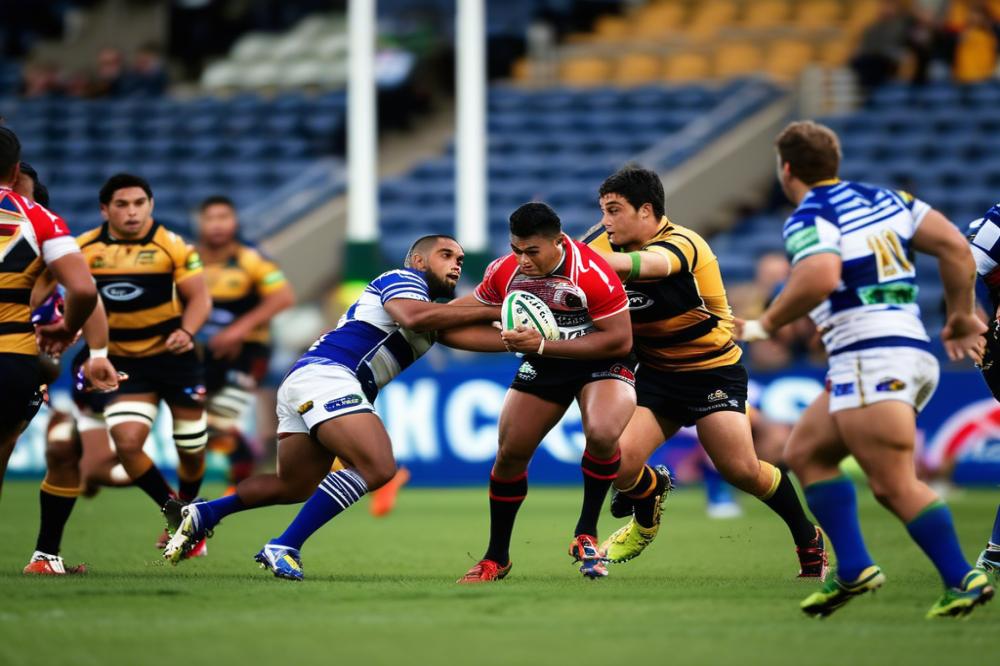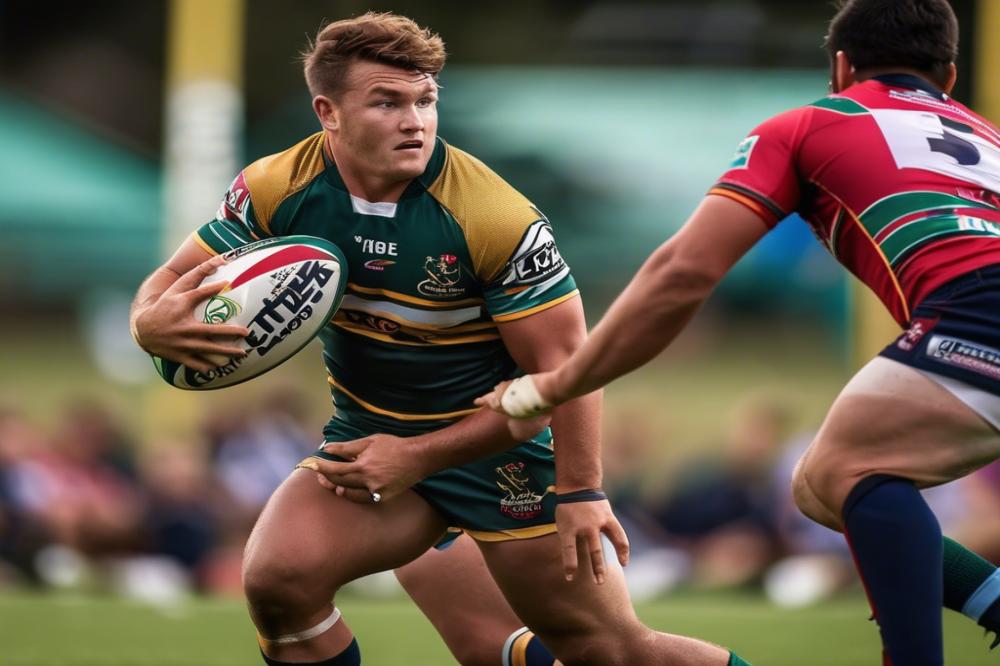Introduction
rugby league, known for its fast pace and physical nature, is a dynamic sport that requires athletes to constantly adjust and refine their skills. The rapidly changing situations on the field mean that players must adapt quickly to different scenarios. A player’s ability to be versatile is vital for success in this sport. Each match can present unexpected challenges, and being adaptable allows them to perform optimally.
In rugby, changing positions is not uncommon and can be crucial for both the team’s strategy and individual growth. This change, often termed Rugby League Position Switching, demands more than just physical ability. It requires mental strength, understanding new roles, and seamlessly fitting into team dynamics. Players must be prepared for these shifts, and their development relies on robust training techniques and physical conditioning alongside mental adjustment.
The National Rugby League’s player development & Pathways program supports players in mastering these transitions. This program emphasizes adaptability and nurtures various skills to aid a successful position change. It also provides structured avenues for players to enhance their game strategy and overall performance. This program thus plays a pivotal role in ensuring athletes are ready for whatever the game asks of them.
Player Adaptation in rugby league is a testament to an athlete’s ability to evolve and meet the demands of the game. This adaptability improves not only individual performance but also benefits the entire team. Versatile players, adept at assuming different roles, contribute significantly to their squad’s overall success. As we explore these player journeys, we’ll see how crucial it is for them to adapt, whether through training techniques or developing multifaceted skills.
Rugby League Position Switching

Position switching in rugby league refers to the act of a player transitioning from one playing position to another. This practice holds significant relevance as it can dramatically influence both individual careers and team success. Unlike some sports where roles are rigid, rugby demands flexibility and openness to new challenges. Switching positions can reshape a player’s journey in the sport.
Why do position changes happen? Various factors lead players to adapt their roles. Injuries sometimes force teams into rearranging the lineup. Coaches might see untapped potential in an athlete, aligning them where their skills fit best. Newly discovered talents or evolving game strategies also prompt this shift. Players may find themselves shifting due to team dynamics or to address gaps in a squad.
Frequency of position changes can vary but is not uncommon. A young athlete might switch roles multiple times while developing fundamental skills. As players climb the professional ladder, they may experience fewer changes. However, team needs or strategic reasons might still spur the need for adjustments. Veterans occasionally switch to positions that dictate less physical strain or complement their matured skills.
Adapting to a new role involves significant effort. It’s challenging yet rewarding. Skills adaptation requires tailored training techniques. Physical conditioning often needs an overhaul. A forward moving to the backline must embrace speed and agility training. In contrast, those moving to forward positions face increased strength demands. Alongside physical shifts, mental adjustment plays a crucial role. Players need to reform their mindset to fit their new duties.
Versatility becomes a valuable asset. Coaches appreciate players who enhance team dynamics by seamlessly integrating into varied roles. This adaptability not only boosts the team’s game strategy but also enriches player development. Engaging with diverse positions fosters a deeper understanding of the game, ultimately producing well-rounded athletes. For these reasons, position switching holds considerable value in rugby league.
Skills Adaptation and Development

Rugby is a sport requiring diverse skills across different positions. Each position has distinct demands. Forwards need strength and resilience. Backs, on the other hand, rely on speed and agility. A winger’s quick pace contrasts sharply with a prop’s necessity for power. Meanwhile, halfbacks must possess strategic awareness and exceptional ball-handling capabilities. They make split-second decisions, steering the team’s direction.
When undergoing a position change, player development becomes essential. Transitioning roles requires a diverse skill set. Athletes must adapt their training to their new responsibilities. This preparation ensures readiness for new challenges. Rugby league position switching might mean developing kicking proficiency for roles that initially didn’t demand it. Flexibility becomes a crucial asset for players.
Training techniques play a pivotal role in skills adaptation during transitions. Specific drills enhance versatility. Coaches design practices targeting precise skills necessary in different positions. The focus is on improving balance, coordination, and technique. Mental adjustment accompanies physical training. Players prepare their minds for unfamiliar roles. Game strategy evolves with these changes. With focused guidance, they learn to embrace unfamiliar tasks.
Physical conditioning and team dynamics impact successful adaptation. Players work to maintain their fitness, regardless of position. Fatigue management becomes critical. Understanding teammates’ roles helps integrate into new formations. Communication is key on the field. Strong relationships with teammates lead to smoother transitions. Emphasizing collective goals can encourage an atmosphere of support and adaptability.
Physical Conditioning and Training Techniques

Physical conditioning plays a crucial role when adapting to a new position in rugby league. Transitioning to another spot on the field demands unique physical attributes. Players shifting positions must develop these traits through targeted exercises. Each role in rugby emphasizes different physical capabilities, requiring bespoke training plans for effective skills adaptation.
Forwards, often tasked with strength and power duties, need regimes focused on strength building. Weightlifting and resistance exercises become core components. Conversely, backs rely greatly on speed and agility. Their sessions include sprint drills and agility ladder work. These training techniques shape an athlete’s physical readiness for their new responsibilities.
Game strategy can influence these training regimens significantly. Coaches adjust plans based on team dynamics and tactical goals. A strategic focus on versatility ensures players are well-prepared for various roles. This strategic approach often considers an individual’s strengths while addressing any potential weaknesses arising from position change.
Body conditioning forms a foundation for successful player development and position changes. Rugby players, aiming for seamless transitions, benefit from a structured regimen that aligns with tactical strategies. Combining targeted exercises with strategic insights fosters comprehensive growth essential for athletes adapting to unfamiliar roles.
Mental Adjustment and Psychological Preparedness
Switching roles in rugby is not just about learning new skills or understanding game strategy. A significant part of the transition involves mental adjustment. When players change positions, they face mental challenges that can affect their performance. Anxiety about living up to expectations is common. One must also deal with the fear of making mistakes in a new role, which can be overwhelming.
To ease these mental hurdles, players need strategies for mental adjustment. Visualizing success can boost confidence. Regular practice in the new role helps, too. Some find it beneficial to work with a sports psychologist. This professional can offer guidance on building mental resilience. Techniques such as mindfulness and positive self-talk encourage a strong mindset. With mental tools, players can better handle the stress of position change.
Psychological resilience is crucial. Players must learn to view setbacks as opportunities for player development. Embracing mistakes as learning experiences fosters a positive attitude. Discussing concerns with coaches or teammates fosters a supportive environment. Open communication strengthens team dynamics and helps in adaptation.
Mental preparation is essential. Preparing mentally for a switch is as important as physical conditioning. A player must understand the new demands of their position. This understanding allows them to adapt their approach effectively.
Ultimately, versatility on the field begins in the mind. A player prepared mentally will adapt faster and thrive in new roles. This agility can transform an individual’s experience of rugby league position switching.
Team Dynamics and Communication
Switching positions in rugby league can significantly alter team dynamics and subsequently affect overall performance. Effective communication ensures smoother transitions. Imagine a team where players move between roles without confusion. Each member knows their task, thanks to constant dialogue.
Impact on Team Dynamics and Overall Performance
Position switching can disrupt the balance of a team. One player’s move requires others to adapt, influencing the entire game strategy. Consider a player shifting from a winger to a center. This change can unsettle the usual flow. If not carefully managed, team cohesion might suffer. Proper execution of skills and techniques is vital. The team must work together to reestablish harmony quickly.
Importance of Communication During Transitional Phases
Out in the field, clear communication is crucial during any position change. Players must understand each other’s roles to maintain unity. A simple shout can avert chaos. Coaches emphasize listening just as much as speaking. With verbal cues, players align efficiently. Clarity and comprehension are the foundations of effective communication within the squad.
Supporting Players Through Position Changes
Teams stand by players adapting to new positions with robust support systems. Training techniques focus on the duality of physical conditioning and mental adjustment. To build versatility, players often collaborate with coaches. They receive guidance tailored to their specific development needs. Special attention to skills adaptation ensures players excel in fresh roles. Team leaders often offer personal tips from their own position change experiences. This bolsters a player’s confidence on the pitch.
Rugby emphasizes teamwork, and position changes in rugby league highlight a team’s capability to evolve and adapt. Through thoughtful communication and strong support systems, teams navigate these shifts admirably.
Adapting, Evolving, and Succeeding: The Future of Position Switching
The ability to adapt to new positions is paramount in rugby league. This dynamic sport requires players to evolve with team needs and play styles. Athletes who switch roles embody flexibility and dedication, showing how essential this skill is for team success.
Transitioning between positions demands a comprehensive development program. Players need to hone diverse skills, understanding both offensive and defensive maneuvers. Training must tailor individual capabilities to new roles, ensuring a seamless fit. Coaches play a critical role, guiding athletes through these intricate changes.
Looking forward, the future of position switching within the NRL Rugby League Player Development & Pathways shows great promise. Teams increasingly recognize the value of versatile players. As strategies evolve, so will the importance of role adaptability. This evolution suggests a future where switching positions becomes not just an option, but a necessity for enduring success in rugby. Such change heralds exciting times for players and teams alike.



